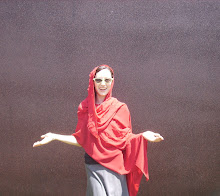Here Come the Pieten! Sinterklaas Revisited- Flashback to a Dutch Christmas

On November 20th with wild abandon parents,the elderly, children, even happy dogs brave the cold to welcome Sinterklaas (the Dutch Santa Claus) to Amsterdam on a steamboat from Spain. I joined a family down the street for the celebration. We hopped in their boat to greet him via the canals. Here is a little piece of that festivity-
“Down at the Amstel the crowds are packing in tight all along the bridges and the river is jammed with boats of all shapes and sizes- full of families, friends, and of course lots of food- applegebach and banketstaaf, tubs of pepernoten, taai taai, and steaming hot tea and coffee. The air is alive with people and color and warmth even though it is so cold out. It is contagious, everyone is smiling, kids are busting out into the Dutch Sinterklaas songs, parents join in too- everyone knows the words. Soon we hear a loud, thunderous horn, the draw bridges raise and Sinterklaas rides in on a large steamer- with crowds of happy, bouncing, friendly Zwarte Pieten by his side waving to the kids, tossing out pepernoten, full of energy and zest. Everyone is cheering and waving, craning to view Sinterklaas. Strangers pass pepernoten and candies across to other boats and back, making jokes with each other- like one large family gathering. The Zwarte Pieten are all dressed in this colorful medieval jester-like garb with mismatched shoes and floppy hats with colorful plumes dancing in the air- and they are everywhere! At least three large boats full of Zwarte Pieten flank behind Sinterklaas’ boat, some even make up small bands playing tunes like pep bands at basketball games back home. They are on the bridges, in the crowds, even hanging from buildings- always catching the eye of parents and children alike with their silly demeanor and promise of candy.”
That Saturday morning on November 20, 2005, as I made my way to my neighbor’s home just a canal and a few streets over, I was not quit sure exactly what to expect. I had heard the stories and seen some Sinterklaas regalia donning the front window of a costume shop on Rozengracht- a golden staff and red pointy bishops hat, not to mention the luxurious white curls that put the Sinter in Sinterklaas- but had yet to experience the energy and frenzy and national pride and unity this celebration brings to families and children in The Netherlands. What I did not know was that there can be no Sinterklaas without Zwarte Piet, who could easily be mistaken by Americans as a 1920s white man dressed as a black man minstrel character. It was precisely the character of Zwarte Piet that struck me as a bit odd, and even taboo. Could Zwarte Piet contribute to racist undertones within Dutch culture? I immediately wanted to learn more about this age-old tradition that is so very Dutch. I decided to base my research paper for my Social Policies, Social Problems and Social Trends course on this festive figure in order to investigate where Zwarte Piet comes from, what that means today, and get a better understanding of each side of the issue concerning the legitimacy of Zwarte Piet.


0 Comments:
Post a Comment
<< Home